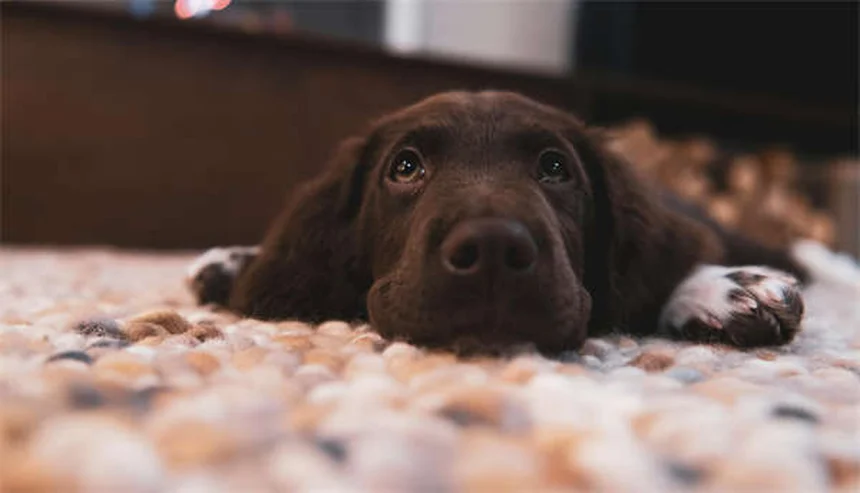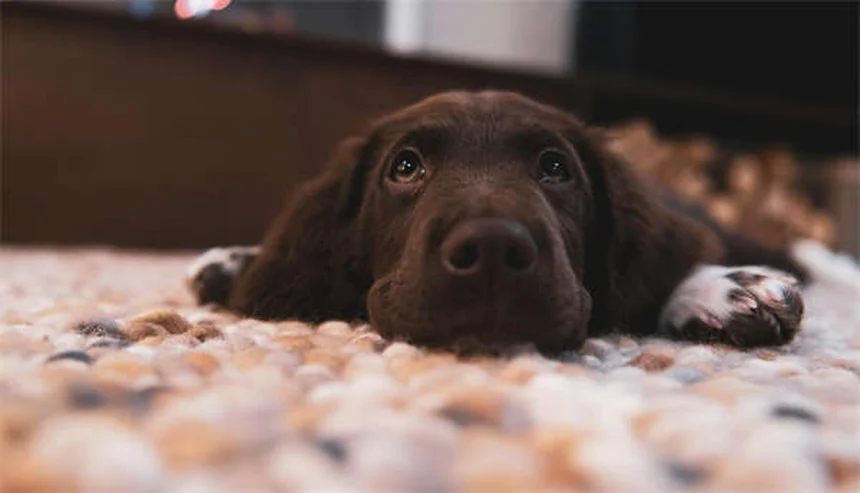Does your cat have dental problems? The answer is: chances are higher than you think! According to Cornell University, 50-90% of cats over 4 years old develop dental disease - and here's the scary part - most owners don't even realize it until serious damage occurs. I've seen too many cats suffer silently with painful mouths when simple preventive care could have made all the difference.You're probably wondering How would I even know if my cat has dental issues? That's exactly why we're talking about this today. Cats are masters at hiding pain, but there are telltale signs we can watch for. From bad breath that could knock you over to subtle changes in eating habits, your cat's mouth tells a story if you know what to look for.Here's the good news: most feline dental diseases are preventable with proper care. Whether it's daily brushing (yes, you can train your cat to tolerate it!), special diets, or regular vet cleanings, we've got multiple ways to keep those pearly whites healthy. Stick with me and I'll walk you through everything you need to know about protecting your cat's dental health.
E.g. :Why Do Hamsters Eat Their Babies? 5 Shocking Reasons Explained
- 1、Understanding Feline Dental Health
- 2、Spotting Dental Problems in Your Cat
- 3、The Dirty Truth About Plaque and Tartar
- 4、Gingivitis - The Gateway to Bigger Problems
- 5、Tooth Resorption - The Silent Tooth Killer
- 6、Prevention - Your Best Weapon
- 7、Treatment Options When Problems Arise
- 8、The Hidden Costs of Ignoring Feline Dental Care
- 9、Debunking Common Dental Care Myths
- 10、Making Dental Care Fun (Yes, Really!)
- 11、Understanding Your Vet's Dental Recommendations
- 12、Nutrition's Role in Dental Health
- 13、When to Seek Immediate Veterinary Care
- 14、FAQs
Understanding Feline Dental Health
Why Should You Care About Your Cat's Teeth?
Let me tell you something shocking - 50-90% of cats over 4 years old develop dental problems! That's according to Cornell University's Feline Health Center. I know what you're thinking - "But my cat seems fine!" Here's the kicker: most cats hide their dental pain extremely well until it becomes severe.
Think about how you'd feel with a toothache. Now imagine not being able to tell anyone about it. That's your cat's reality. Dental issues aren't just about bad breath - they can lead to serious infections affecting the heart, liver and kidneys. The good news? With proper care, we can prevent most of these problems or catch them early.
What Exactly Are These Dental Issues?
Your cat's mouth can develop several problems, but let's focus on the big four:
| Condition | What It Is | How Common |
|---|---|---|
| Plaque & Tartar | Bacterial buildup on teeth | Extremely common |
| Gingivitis | Inflamed gums | Affects 80% of cats by age 3 |
| Periodontal Disease | Advanced gum/bone infection | 60% of cats over age 4 |
| Tooth Resorption | Teeth dissolving from inside | Affects 30-60% of cats |
Notice how these conditions often progress from one to another? That's why early intervention is crucial. Did you know that just three days of plaque buildup can harden into tartar that brushing can't remove?
Spotting Dental Problems in Your Cat
 Photos provided by pixabay
Photos provided by pixabay
Obvious Signs You Might Notice
Some symptoms are hard to miss if you're paying attention:
- Bad breath that could knock you over (not normal "cat breath")
- Dropping food or chewing strangely
- Pawing at their mouth like they're trying to remove something
But here's something interesting - have you ever seen your cat "chatter" its teeth when looking at birds? While this can be normal excitement behavior, excessive teeth chattering might indicate dental pain. Watch for patterns!
Subtle Signs Most Owners Miss
These sneaky symptoms often get overlooked:
- Suddenly preferring wet food over dry
- Eating more slowly than usual
- Slight weight loss over time
Here's a pro tip: check your cat's water bowl. If you notice them dipping their paw in water then licking it, they might be trying to soothe a painful mouth. Cats are masters at hiding discomfort, so we need to be detectives!
The Dirty Truth About Plaque and Tartar
How Plaque Turns Into Trouble
Imagine your cat's teeth like a sidewalk after rain. At first, the water (plaque) just sits there. But if you don't sweep it away, it starts growing stuff, right? That's exactly what happens in your cat's mouth.
Plaque forms constantly - it's that sticky film you can feel on your own teeth if you skip brushing. Now here's the wild part: cat saliva contains minerals that turn plaque into tartar (calculus) in as little as 24-72 hours. Once tartar forms? You can't brush it off - it needs professional removal.
 Photos provided by pixabay
Photos provided by pixabay
Obvious Signs You Might Notice
Tartar isn't just ugly - it's like a bacterial apartment complex. The rough surface gives bad bacteria the perfect place to multiply and attack your cat's gums. Before you know it, gingivitis sets in.
Here's a scary thought: What if I told you that by age 3, 80% of cats already have gingivitis? That's why starting dental care early is so important. The younger your cat gets used to tooth brushing, the better their chances of avoiding serious problems.
Gingivitis - The Gateway to Bigger Problems
Recognizing Gum Disease Early
Healthy cat gums should look like pink bubble gum - firm and smooth. With gingivitis, they become red, swollen, and might bleed easily. You might notice:
- A red line along the gumline
- Reluctance to eat hard food
- Excessive drooling (sometimes with blood)
The good news? At this stage, the damage is usually reversible with proper care. But wait too long, and...
When Gingivitis Turns Serious
Left untreated, gingivitis progresses to periodontitis - where the infection starts destroying the bone holding teeth in place. This isn't just about losing teeth (though that's bad enough). The bacteria can enter the bloodstream, potentially damaging organs like the heart and kidneys.
Here's something vets wish more owners knew: by the time you notice obvious symptoms, your cat may already have advanced disease. That's why regular checkups are so crucial - your vet can spot problems long before they become obvious.
Tooth Resorption - The Silent Tooth Killer
 Photos provided by pixabay
Photos provided by pixabay
Obvious Signs You Might Notice
Unlike human cavities that start outside the tooth, feline tooth resorption begins from the inside. The tooth literally dissolves itself! We don't fully understand why this happens, but inflammation seems to play a role.
Here's the crazy part: your cat might not show any pain until the condition is advanced. Some signs to watch for:
- Suddenly preferring one side of the mouth when eating
- Twitching whiskers when chewing
- Unexplained drooling
How Vets Handle Resorptive Lesions
Unfortunately, there's no way to stop or reverse tooth resorption. The only solution? Extraction. But here's some good news - cats adapt amazingly well to missing teeth. Many continue eating normally, especially if we catch the problem early.
Think about it this way: would you rather keep a painful tooth or have it removed so your cat can eat comfortably? The choice becomes pretty clear when you see how much better they feel after treatment!
Prevention - Your Best Weapon
Daily Care That Makes a Difference
Brushing your cat's teeth might sound impossible, but many cats can learn to tolerate it with patience. Start slow - let them taste the toothpaste (never use human toothpaste!), then gradually introduce the brush.
Can't brush? No problem! Try these alternatives:
- Dental wipes (like gauze wrapped around your finger)
- Water additives that reduce plaque
- Special dental diets that mechanically clean teeth
Professional Care You Shouldn't Skip
Even with perfect home care, your cat needs professional cleanings. Why? Because only vets can:
- Remove tartar below the gumline
- Take dental x-rays to find hidden problems
- Treat issues before they become painful
Here's my advice: schedule annual checkups and ask your vet how often your cat needs professional cleanings. Some cats need them yearly, others can go longer. Your vet will help you create the perfect dental plan!
Treatment Options When Problems Arise
Non-Surgical Approaches
For mild cases, your vet might recommend:
- Antibiotics to control infection
- Anti-inflammatory medications
- Special mouth rinses
But here's the reality check: these treatments only manage symptoms. Without addressing the underlying dental disease, the problems will keep coming back.
When Surgery Becomes Necessary
For advanced cases, extractions might be the kindest option. I know it sounds scary, but consider this: cats typically recover quickly and eat normally within days. The relief from chronic pain makes it worthwhile!
The bottom line? Dental health is crucial for your cat's overall wellbeing. With proper care and regular vet visits, you can keep your feline friend's smile healthy for years to come!
The Hidden Costs of Ignoring Feline Dental Care
How Dental Problems Affect Your Wallet
You might think skipping regular dental care saves money, but let me break down the real costs. A simple professional cleaning typically costs $200-$400, while treating advanced periodontal disease can easily exceed $1,000 when you factor in extractions, medications, and follow-up visits.
Here's a comparison that'll make you think twice:
| Care Type | Average Cost | Potential Savings |
|---|---|---|
| Annual cleaning | $300 | Prevents $700+ treatments |
| Dental treats | $20/month | Reduces need for cleanings |
| Emergency extraction | $800+ | Could've been prevented |
Investing in prevention isn't just better for your cat - it's smarter for your budget too. Would you rather pay $300 now or $1,200 later? That's not even considering the pain your cat would endure in the meantime.
The Emotional Toll on You and Your Cat
Watching your feline friend suffer with dental pain is heartbreaking. I've seen too many owners break down when they realize how long their cat has been hiding discomfort. The guilt is real, but preventable!
Here's something vets don't always mention: cats with chronic dental pain often become irritable or withdrawn. That "grumpy old cat" personality might actually be a cry for help. After treatment, many owners are amazed at how much more affectionate and playful their cats become.
Debunking Common Dental Care Myths
"Dry Food Cleans Teeth Naturally"
Let's bust this myth wide open. While crunchy kibble might help slightly with plaque, it's nowhere near as effective as brushing. Think about it - you wouldn't expect pretzels to clean your teeth, right?
The truth is, most cats swallow kibble whole or barely chew it. Even when they do crunch, the food shatters on contact with teeth, providing minimal cleaning action. Some prescription dental diets work better, but they're still no substitute for proper dental care.
"My Cat's Too Old for Dental Care"
This one breaks my heart. Age isn't a disease! Senior cats actually benefit more from dental care because their immune systems are weaker. I've successfully treated 15-year-old cats who regained their appetite and energy after dental work.
Modern veterinary anesthesia is safer than ever, with pre-anesthetic bloodwork and monitoring making procedures low-risk for most seniors. The real danger isn't anesthesia - it's leaving painful dental conditions untreated.
Making Dental Care Fun (Yes, Really!)
Turning Brushing Into Bonding Time
Who says dental care has to be stressful? With the right approach, tooth time can become quality time. Start by letting your cat sniff and lick the toothpaste (pet-safe varieties come in yummy flavors like chicken and fish).
Progress to rubbing their gums with your finger before introducing a brush. Keep sessions short and positive, always ending with praise or play. Many cats actually come to enjoy the attention - I've seen some purr through the whole process!
Creative Alternatives to Brushing
If your cat absolutely won't tolerate brushing, don't give up! Try these fun alternatives:
- Dental toys designed to clean teeth through chewing
- Freeze-dried meat treats that require gnawing
- Interactive feeders that make cats work for food
The key is making dental care part of playtime. What if I told you that 5 minutes of dental play could add years to your cat's life? That's how powerful prevention can be!
Understanding Your Vet's Dental Recommendations
Why Dental X-Rays Matter
You can't judge a tooth by its cover! Up to 60% of dental disease occurs below the gumline where you can't see it. That's why vets recommend dental x-rays - they reveal problems like:
- Hidden root infections
- Early-stage resorptive lesions
- Jawbone deterioration
Without x-rays, your vet might miss serious issues. It's like trying to diagnose a engine problem by just looking at the car's exterior - sometimes you need to peek inside!
The Truth About Anesthesia-Free Cleanings
Those "anesthesia-free" dental cleanings might seem appealing, but here's the reality: they only clean the visible tooth surfaces while your cat is stressed and restrained. They can't:
- Clean below the gumline (where most disease starts)
- Treat discovered problems
- Take x-rays
Veterinary dental associations actually consider these procedures unethical because they provide a false sense of security while missing the most important aspects of dental care.
Nutrition's Role in Dental Health
Foods That Fight Plaque
While no food replaces brushing, some can help. Look for:
- VOHC-approved dental diets (they meet veterinary standards)
- Foods with texture designed to scrub teeth
- Added polyphosphates that prevent tartar formation
Remember though - these work best as part of a complete dental care plan. Think of them as the cherry on top of your dental care sundae, not the whole dessert!
Supplements That Actually Help
The pet supplement market is full of dental claims, but few products have scientific backing. These are the ones worth considering:
- Probiotics specifically for oral health
- Seaweed-based additives that reduce plaque bacteria
- Enzymatic water additives
Always check for the VOHC seal when choosing dental products - it's your guarantee that independent experts have verified the claims.
When to Seek Immediate Veterinary Care
Dental Emergencies You Can't Ignore
Some symptoms demand same-day vet attention:
- Sudden refusal to eat or drink
- Facial swelling (especially under an eye)
- Bleeding from the mouth that won't stop
These could indicate abscesses, fractured teeth, or other serious issues. Remember: cats hide pain until it's unbearable, so if they're showing discomfort, it's probably severe.
The Danger of Oral Infections
Bacteria from dental infections can spread through the bloodstream, potentially causing:
- Heart valve damage
- Kidney infections
- Joint problems
This isn't scare tactics - it's science. Keeping your cat's mouth healthy protects their entire body. Their health is literally in your hands!
E.g. :Dental Issues in Cats | PetMD
FAQs
Q: How can I tell if my cat has dental pain?
A: Watch for these subtle signs of feline dental pain that most owners miss: First, check their eating habits - are they suddenly preferring wet food over dry? Dropping food while eating? Chewing on one side of their mouth? These could indicate tooth discomfort. Second, observe their behavior - excessive pawing at the mouth, teeth chattering, or even just being less active than usual can signal oral pain. Remember, cats evolved to hide weakness, so by the time they're obviously suffering, the problem is usually advanced. That's why regular vet checkups are crucial for early detection.
Q: What's the most common dental problem in cats?
A: Gingivitis takes the top spot as the most common feline dental issue, affecting about 80% of cats by age 3. It starts when plaque builds up at the gumline, causing inflammation. Left untreated, gingivitis progresses to periodontal disease where the infection damages the bone supporting the teeth. The scary part? This can happen as early as age 1 in some cats! The good news is gingivitis is reversible with proper care - daily brushing, vet cleanings, and sometimes antibiotics can get those gums healthy again before permanent damage occurs.
Q: Can I use human toothpaste for my cat?
A: Absolutely not! Human toothpaste contains ingredients like xylitol and fluoride that are toxic to cats. Instead, use toothpaste specifically formulated for felines - these come in flavors like poultry or fish that cats actually enjoy. Here's a pro tip: introduce toothpaste slowly by letting your cat lick it off your finger before attempting to brush. Many cats grow to like the taste, making the whole brushing process much easier. If brushing isn't possible, ask your vet about alternatives like dental wipes or water additives.
Q: How often should my cat get professional dental cleanings?
A: Most cats need annual professional cleanings, but some may require them every 6 months if they're prone to dental issues. Here's why these cleanings are so important: while home care removes surface plaque, only vet cleanings can address tartar below the gumline where most damage occurs. The procedure is done under anesthesia and includes x-rays to detect hidden problems. I know anesthesia sounds scary, but modern veterinary practices make it very safe, and the benefits far outweigh the risks when it comes to preventing serious dental disease.
Q: Are some cat breeds more prone to dental problems?
A: Yes, certain breeds do have higher risks. Siamese and Abyssinian cats tend to develop periodontal disease earlier in life. Persians and other flat-faced breeds often have crowded teeth that trap more plaque. But here's the important thing to remember: no cat is immune to dental disease. Whether you have a purebred or a domestic shorthair, preventive care is essential. Start young if possible - kittens who get used to mouth handling early are much easier to care for as adults. Your vet can help create a customized dental plan based on your cat's specific needs.

